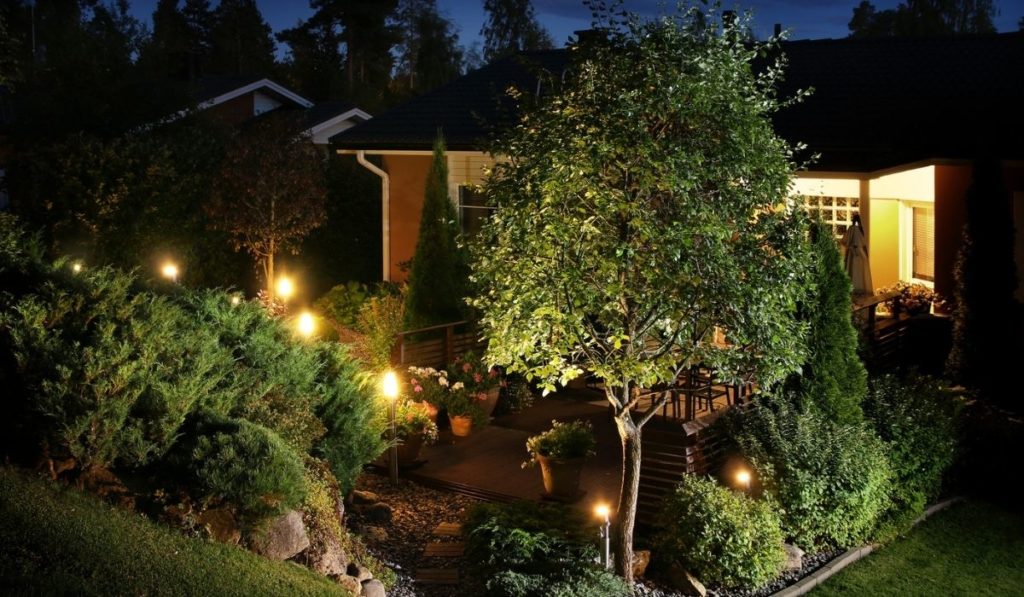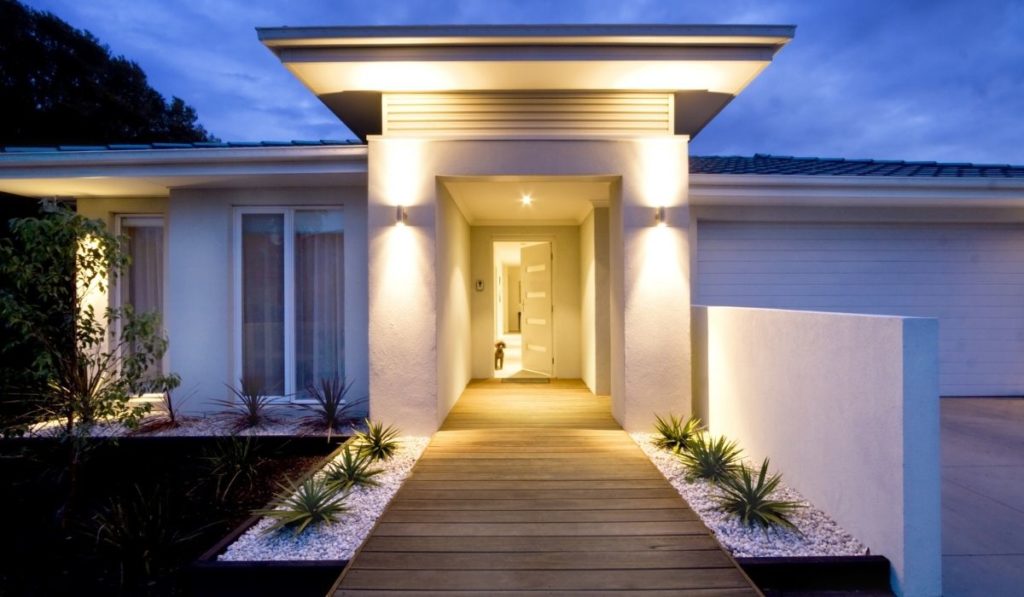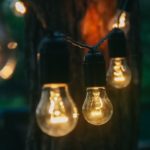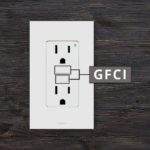Adding lights to the exterior of your home can be a great value-add. Whether its lighting up a backyard hang-out area for entertaining, or simply adding spotlights in the front to highlight decorate features of the house or landscaping, outdoor lights can be a huge upgrade. But they can have some complications, like putting off too much heat.
Outdoor lights can become very hot if left on for a long time. To keep them cool, use dimmable bulbs or switch timers so they aren’t on all the time. LED bulbs don’t get near as hot as traditional bulbs. Always use outdoor bulbs in an outdoor fixture to avoid overheating issues.
It’s essential to stay safe while using outdoor electrical devices. In this article, we’ll discuss how you can do that and how you can keep your outdoor lights from getting hot. There are some simple ways that you make sure your bulbs aren’t getting too hot and damaging your home or the light fixture.
Will My Outdoor Lights Get Hot If Left On?

This isn’t rocket science – just like any bulb, outdoor lights will get hot after staying on for long periods.
Outdoor lights are usually installed to illuminate the environment outside our homes. And every outdoor light uses electricity to produce light.
This electricity causes the light bulb to get hot, and the longer it stays on, the hotter it becomes. So how can you make it stop? And is it even a problem at all, really? Let’s take a close look at these questions.
How Can I Keep My Outdoor Lights from Getting Hot?
Real quick, we need to make a pit stop at terminology here. In this article we’re talking about the literal heat – the temperature – of the light bulb surface. However, in the outdoor lighting space, “temperature” can also refer to the color value of the light (whether it’s a warmer/yellower light vs a harsher/brigher-white light).
When we talk about a bulb itself getting hot, we’re talking about the surface of the bulb getting too hot to touch, or hot enough to damage components of your house, the light fixture, etc. This can also happen, and it’s unrelated to the “color” of the bulb. So, while a light might be described as “warmer” or “brighter,” when referring to the color, those words don’t apply at all to the actual literal temperature.
All lights, of all colors (no matter what kelvin value) will get hot, because of how lights work, not because of the color temperature. So, how can you stop your light from increasing being too hot if you do have a problem with an overheating bulb?
Install a Dimmer: To reduce the brightness of your bulb and, by extension, its heat output/temperature, you can install a dimmer for your light fixture. This is a better option than just buying a weak light bulb, as there are times you would need a brighter light.
You can determine how bright or low you want your outdoor light to be with a dimmer. However, not all bulbs are compatible with a dimmer, so make sure that your light bulbs are compatible before using a dimmer with them.
Some outdoor lights, like the LOHAS Dusk to Dawn Sensor Light Bulb (on Amazon), have built-in “dawn til dusk” sensors to make sure they turn on all night, and even when it’s overcast outside.
Replace Bulbs: traditional incandescent bulbs are fine for outdoor use, especially if they’re protected in an outdoor lighting fixture. But, LED bulbs use much less electricity than traditional bulbs, and produce much less heat.
If you have a heat problem, or if you just don’t want to potentially have one, you can simply replace all the bulbs with LEDs.
You can find LED bu;bs that range in color temperature (warmth/brightness) just like older bulbs. Check out the Outdoor LED String Lights (on Amazon) as just one example.
Is It Safe for My Outdoor Lights to Get Hot?
Sometimes, we don’t get to choose how hot our outdoor lights get – we have to leave them on for a long time. It’s generally safe to leave outdoor lights on (even though they’ll get hot) as long as you practice some safety precautions.
You can do some or all of the following to ensure that your outdoor lights remain safe no matter how long you leave them on or how hot they get:
- Ensure that all your outdoor lighting fixtures are rated for the outdoors, although their rating level would depend on where they’re being used. For example, a light installed under a shed or porch roof should have a rating that states that it’s suitable for damp areas. On the other hand, light fixtures with no roof over them should have a higher outdoor rating, such as weather-resistant or weatherproof.
- In the same vein, try to purchase light bulbs rated for the outdoors.
- All in all, everything you need for outdoor lights should be outdoor-rated, including your extension cords. Indoor cords are usually flexible and light and are not made for damp conditions. Your best bet is an outdoor-rated extension cord.
- Avoid placing your light bulbs and fixtures close to flammable materials. That might create a totally different problem when the lights start to heat up.
- Install ground fault circuit interrupters (GFCI) inside and outside – anywhere you have something plugged in.
- You can leave something plugged into an outdoor receptacle for a few days if it’s in a sheltered area that’s not exposed to direct weather conditions. Make sure to cover it with something that closes and protects it when nothing is plugged into it. Look for labels that state that the cover is ideal for wet locations. The same goes for outdoor receptacles that aren’t in a sheltered area.
Do All Types of Outdoor Lights Get Hot?

Some people buy light bulbs that get extremely hot because they don’t know there are different kinds of bulbs or that they heat up differently. You’ve probably heard of fluorescent lights, halogen lights, incandescent lights, LED lights, and others.
All these lights get hot, but if you want the best option, LED lights are the way to go.
LED light bulbs are much more more energy efficient than other lights. That means they won’t generate as much heat as other lights.
They also usually have built-in heat sinks to manage and contain their own heat generation. This heat sink allows the heat generated by the light to escape, ensuring that your light performance stays consistent. Also, unlike other lights, LED bulbs don’t burn out. Instead, the light gradually starts to dim over long periods of time..
You can use LED lights anywhere and for anything, so they’re suitable for the outdoors. However, you also need to read their safety precautions and instructions to learn the best way to handle them.
Do Outdoor String Lights Get Hot?
More people are starting to use string lights because of how beautiful they can make their surroundings. They’re even more popular during holidays like Christmas and Halloween.
Still, they get hot too – just like any other lights – and can even be a fire hazard if not handled properly.
Not to worry, they’ll be fine as long as you keep up with them. You can do that by:
- Plugging the cords into a GFCI outlet to prevent electrical hazards.
- Not using strings with brittle or worn wires. If you have those, throw them out and get new ones.
- Only using outdoor-rated light bulbs.
- Not exposing your sockets.








